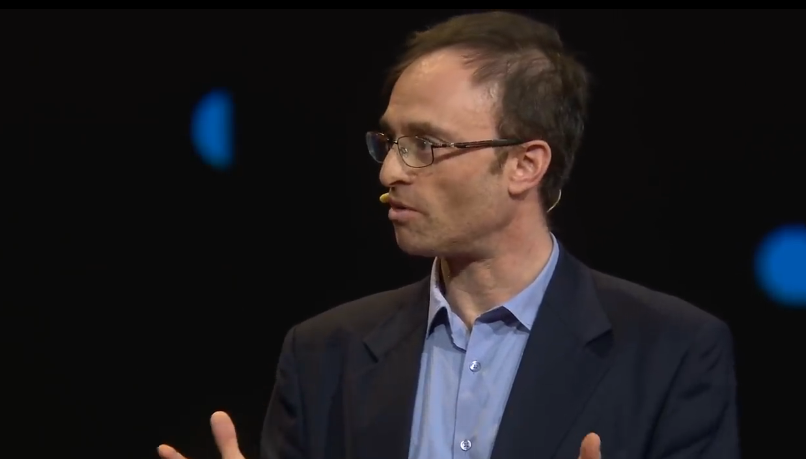A few years ago, you embarked on this mission to try and actually image one of these things.
幾年前,你接受這項任務來嘗試并且、構想出這些東西的樣子。
And I guess you took -- you focused on this galaxy way out there. Tell us about this galaxy.
我猜——你一直在研究宇宙中的這個星系。給我們介紹一下這個星系吧。
This is the galaxy -- we're going to zoom into the galaxy M87, it's 55 million light-years away.
這就是我研究的星系。我們現(xiàn)在要放大M87星系,它距離我們5500萬光年。
Fifty-five million. Which is a long way. And at its heart, there's a six-and-a-half-billion- solar-mass black hole.
5500萬。距離非常遠。在這個星系的中心,有一個相當于65億倍太陽質量的黑洞。
That's hard for us to really fathom, right? Six and a half billion suns compressed into a single point.
對于我們而言很難準確測量其質量,對吧?65億倍太陽質量的物質壓縮在這一點。
And it's governing some of the energetics of the center of this galaxy.
并且這個黑洞掌管著這個星系中心的一部分能量。
But even though that thing is so huge, because it's so far away, to actually dream of getting an image of it,
雖然它這么大,但因為它距離地球很遠,要想拍攝到它的照片,
that's incredibly hard. The resolution would be incredible that you need.
這非常困難。分辨率要求之高令人難以想象。

Black holes are the smallest objects in the known universe. But they have these outsize effects on whole galaxies.
黑洞是宇宙中已知的最小的物質。但它們對于星系整體而言有著巨大的影響。
But to see one, you would need to build a telescope as large as the Earth,
想要看到它,你需要一個像地球那么大的望遠鏡,
because the black hole that we're looking at gives off copious radio waves.
因為我們正在觀察的這個黑洞會發(fā)出大量的無線電波。
It's emitting all the time. And that's exactly what you did.
它無時無刻不在發(fā)出這些電波。這就是你所做的事。
Exactly. What you're seeing here is we used telescopes all around the world, we synchronized them perfectly with atomic clocks,
沒錯。你現(xiàn)在所看到的是我們部署在全球的望遠鏡,我們讓它們與原子鐘完美同步,
so they received the light waves from this black hole, and then we stitched all of that data together to make an image.
讓它們接收黑洞發(fā)出的光波,然后我們將所有數(shù)據(jù)拼接在一起組成黑洞的照片。
To do that the weather had to be right in all of those locations at the same time, so you could actually get a clear view.
為了達成這個目標,所有望遠鏡所在地的天氣狀況都必須達到一定條件,這樣你們才能有清晰的視角。











